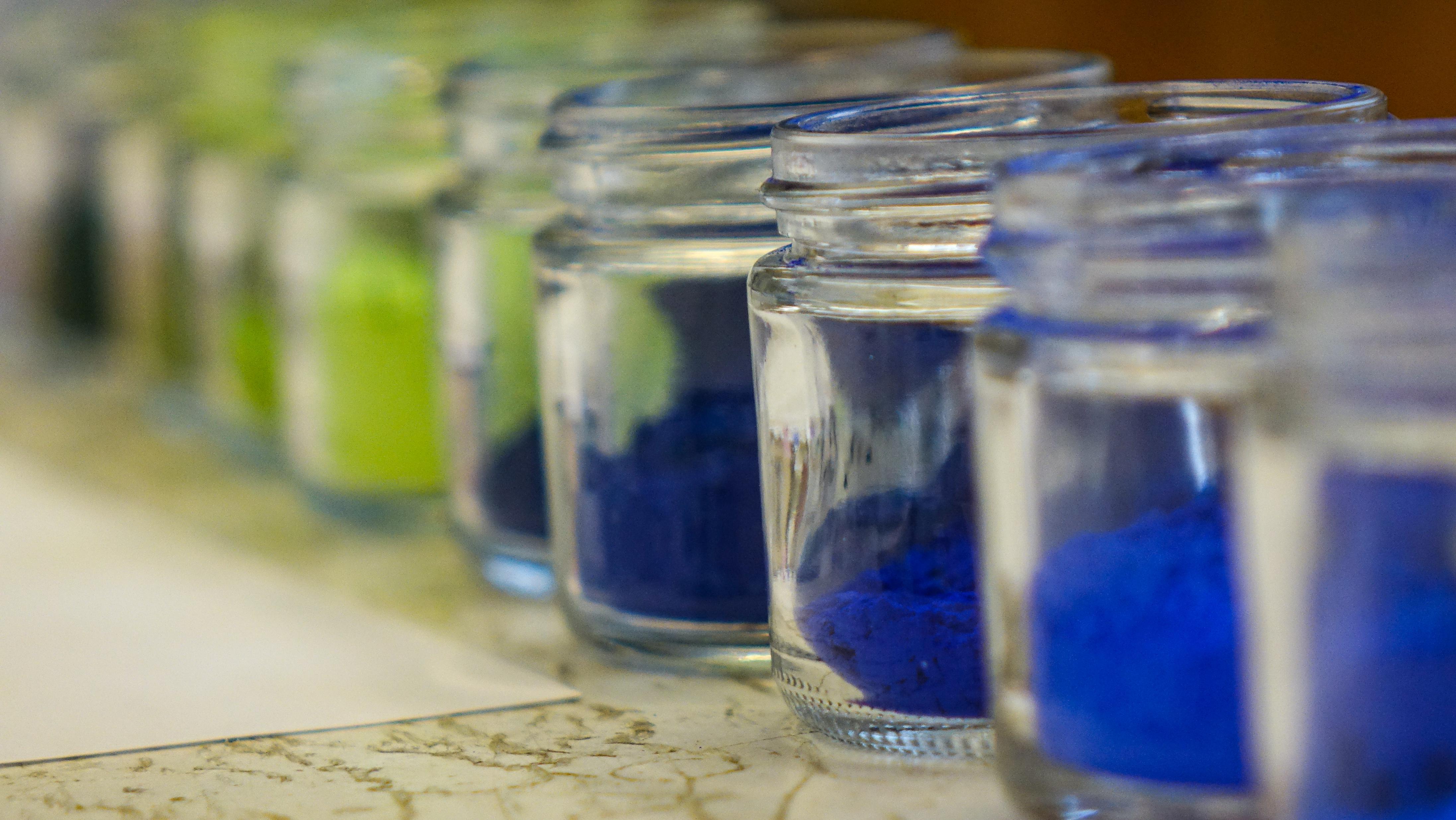Mas Subramanian is a scientist versed in serendipity – the happy chance occurrence, the lottery of the amazing.
“Many of the important scientific discoveries come by accident or by serendipity. Clearly, it’s part of doing science. You always have to be prepared for it,” he said.
Serendipity was in play a decade ago when his Oregon State University lab discovered a new blue pigment, which would be named YInMn (pronounced yin-min) blue. He was looking for new materials to use in electronics, but what Subramanian’s graduate student pulled out of the 2400 degree Fahrenheit oven was something entirely different.
“When he takes the sample out of the furnace… I was in the lab. I couldn’t believe it. I was shocked because the samples came out so blue,” he said. “At the first moment I know it was going to be an amazing discovery.”
Throughout human history, the color blue has been a conundrum. Blue minerals that can be used to make pigment for paint are rare on Earth. It wasn’t until about three centuries ago that we finally figured out how to create blue pigment that was durable and cheaper than gold.
But once we found a few basic recipes that worked, progress on the color blue pretty much stopped.
That is, until Subramanian discovered YInMn blue. It was the first new blue pigment discovered since Thomas Jefferson was president and one of the most vivid blue colors ever created.
Now his lab is pushing color science forward once again.
How colors work
When people create color, whether it be the purple of grape soda, the green of a wool sweater, or the yellow of Van Gogh's Sunflowers, they can use dyes or pigments.
Dyes are made from organic material – like the red from beets. We use them for food (because your body can digest them) and clothing, but they don’t hold their color over time.
You need something much more durable for things like paint and ceramics. That’s where pigments come in. They’re inorganic – often made from rocks and minerals – and they’re much more durable.
YinMn blue is durable, but it also is highly heat reflecting – meaning a deck painted with YinMn blue would feel much cooler on your feet than other blues.
Since the discovery of the new blue pigment in 2009, Subramanian remained focused on the chemistry of color.
He figured out that YInMn blue’s brilliance comes from the way some of its molecules are arranged. In particular, there’s a trigonal bipyramidal structure – think two four-sided pyramids with their butts stuck together — in the new pigment.
“It’s not very common in minerals… That’s why no one thought [that] this coordination would give rise to vivid colors,” Subramanian said.
To the skies
Subramanian started looking for that same molecular structure out in nature.
But turns out, it’s very rare on Earth. So he turned to the skies.

Oregon State University PhD candidate Elizabeth Converse pulls YInMn blue out of the furnace.
Brandon Swanson, OPB
“We found a mineral called hibonite,” he said. “It's only seen in meteoroids.”
Way back when the planets were just a cloud of gas around the sun, hibonite was one of the first minerals that formed. Now it occasionally falls to Earth.
Hibonite formed under extremely high temperatures.
"These are the kinds of minerals that go into ceramics. Like if you need to do baking or something, you want something that's stable at high temperature. Your ceramic cookware is made of things like this," said Alex Ruzicka of the Cascadia Meteorite Laboratory at Portland State University.
Stability is important for color as well. After all, no one wants paint that fades.
Subramanian and OSU PhD student Brett Duell started experimenting with hibonite, adding a little bit of cobalt to try to make another new blue pigment. The process involves measuring out each elemental ingredient precisely before baking it at extremely high temperatures. The scale used to measure out the ingredients is so sensitive that breathing on it can change the reading.
“When somebody stresses you have to be exactly on, you either take it super seriously and go extremely slowly at first. Or you’re like ‘Naw, it doesn’t have to be that close.’ And you have to do it over, at least in this kind of chemistry,” Duell said.
Unexpected intensity
When the initial hibonite mixture came out of the furnace, the results didn’t rise to the level of serendipity, but it did offer up a surprise.
“We didn't expect it to be as intense as it was,” he said.
Timeline: A Brief History of Blue

When Duell saw the intensity of the blue pigment produced, he took it to Subramanian to show him the results.
“The color came out much more vivid than the cobalt blue known for 200 years,” Subramanian said.
Cobalt blue without hibonite is one of the primary blue pigments in use today, but the cobalt raw materials are toxic and manufacturers warn against breathing cobalt-based paint when it's sprayed.
“What made it extremely interesting is when we realized that the amount of cobalt was so low getting off the same color. It was a little surprise moment. Followed by an ‘ah ha’ moment like an hour or so later,” Duell said.
This hibonite version uses a fraction of that cobalt, and the materials are cheaper by a sixth. But it’s still too early to know if hibonite blue will catch on with manufacturers.
Regardless, Subramanian’s lab will continue its search for color.
“Every day I walk into this chemistry building, I really don’t know what I'm going to discover. I have some ideas. I have some goals. But once you enter the lab, put things together, you don’t know what it’s going to be,” he said.
And the next big color challenge Subramanian and his lab are taking on will be red.

Various pigments created in Mas Subramanian's lab.
Jes Burns, OPB

